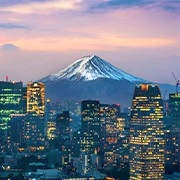Cozy Annapurna Comfort Quest

Friends, imagine swapping dusky Kathmandu streets for a trail lined with wood‑fired stoves and apple pie aromas at 3,000 m. The Annapurna Circuit weaves 160 km through rice terraces, high passes, and remote villages, where each night brings a snug bed and hearty meal.
This guide delivers exact bus times, jeep fares, permit fees, tea‑house rates, and insider tips—ensuring trekkers navigate the loop’s challenges with confidence and comfort.
Getting There
Daily deluxe buses depart Kathmandu’s Gongabu Bus Park at 7:00 AM, arriving in Besisahar by 3:00 PM (1,000 m) for $15. From there, government‑run jeeps leave at 6:00 AM and 4:00 PM, covering 65 km to Chame (2,710 m) in five hours for $12. Private jeeps can be chartered in groups (up to six passengers) for $80 total, guaranteeing a 6:00 AM departure. Each leg ascends steadily, so pack snacks and water for the eight‑hour journey.
Tea Houses
Over 100 tea houses punctuate the route, spaced roughly every 5–8 km. ACAP and TIMS permits enforce standard bed rates of $4–$6 per night, with two‑meal packages (dinner and breakfast) costing $6–$10 total, varying by altitude and season. During peak months (October–November, March–April), arriving before 5:00 PM secures preferred rooms. Shoulder seasons (May, September) offer greater flexibility and occasional meal‑room discounts, rewarding those who trek off‑peak.
Room Comforts
Lodging provides a twin mattress, foam pillow, two wool blankets, and a mosquito net above 2,500 m. A 0 °C rated sleeping bag is essential above 3,500 m; most lodges rent one for $1 per night. Shared washrooms charge $0.50 per use—carry spare toilet paper, as supplies dwindle beyond Manang (3,540 m). Wooden shutters and thick plank doors minimize drafts, delivering surprisingly cozy nights even near Thorong La Pass (5,416 m).
Communal Hubs
Dining rooms double as social lounges, warmed by wood‑burning stoves that glow until late. Guests gather over steaming dal bhat ($5), apple pie ($3), and ginger tea ($1), sharing route updates and altitude‑acclimatization stories. Board games and card decks populate tables—bringing a personal deck enriches evenings. This lively camaraderie transforms chance lodgings into memorable communal retreats.
Modern Amenities
Electricity arrives via micro‑hydro or solar, with device charging at $0.50 per hour. Hot showers, powered by solar tanks, cost $2 after 6:00 PM; cloudy days can limit availability. Wi‑Fi hotspots appear above 2,800 m (Yak Kharka, Manang) at $3 per hour. Ncell and Smart mobile service surfaces around Yak Kharka (3,600 m), enabling weather checks and emergency calls—vital for high‑altitude safety.
Booking Tips
All guesthouses operate first‑come, first‑served—carry a headlamp for late arrivals and possible floor‑sleep arrangements. Solo trekkers can secure better accommodation during peak seasons—like October or May’s Tiji Festival in Upper Mustang—by joining small local groups or hiring a porter.
Accommodation prices vary:
- Basic Room (Shared Bathroom): $3–$7 per night
- Private Room (Attached Bathroom): $10–$20 per night
- Dormitory/Floor Space: $2–$5 (common during peak seasons or festivals)
Secure TIMS ($20) and ACAP ($30) permits in Kathmandu or Pokhara, and carry printed copies. Buffer days in Ngawal (3,660 m) or Manang prevent altitude sickness and open side‑trip options.
Acclimatization
Plan rest days at Manang and Ngawal, incorporating gentle 2–3 hour hikes to Ice Lake (4,000 m) or Gangapurna Lake (4,100 m) for acclimatization. Symptoms of headache, nausea, or dizziness call for immediate descent. Hydration and slow ascent pacing—no more than 300–500 m elevation gain per day above 2,500 m—are critical. Local tea houses stock rehydration salts and basic medicines for minor ailments.
Budget Breakdown
A typical 15‑day loop costs approximately: transport $27 (bus and jeep), permits $50, lodging $90 (average $6/night), meals $225 (three per day at $5 each), gear rentals $30, and extras (showers, charging, Wi‑Fi) $75—totaling about $497. Optional black‑water rafting or helicopter rescue insurance adds $100–$150. Carry $20–$30 in local rupees for remote purchases, as ATMs vanish past Dharapani.

Conclusion
Which cozy tea‑house fire will welcome you after conquering Thorong La? Secure your permits, reserve transport early, and pack layers to master each mile.
Pack curiosity and prepare for a circuit that proves adventure and homeliness can ascend hand in hand.

 · Travel team
· Travel team